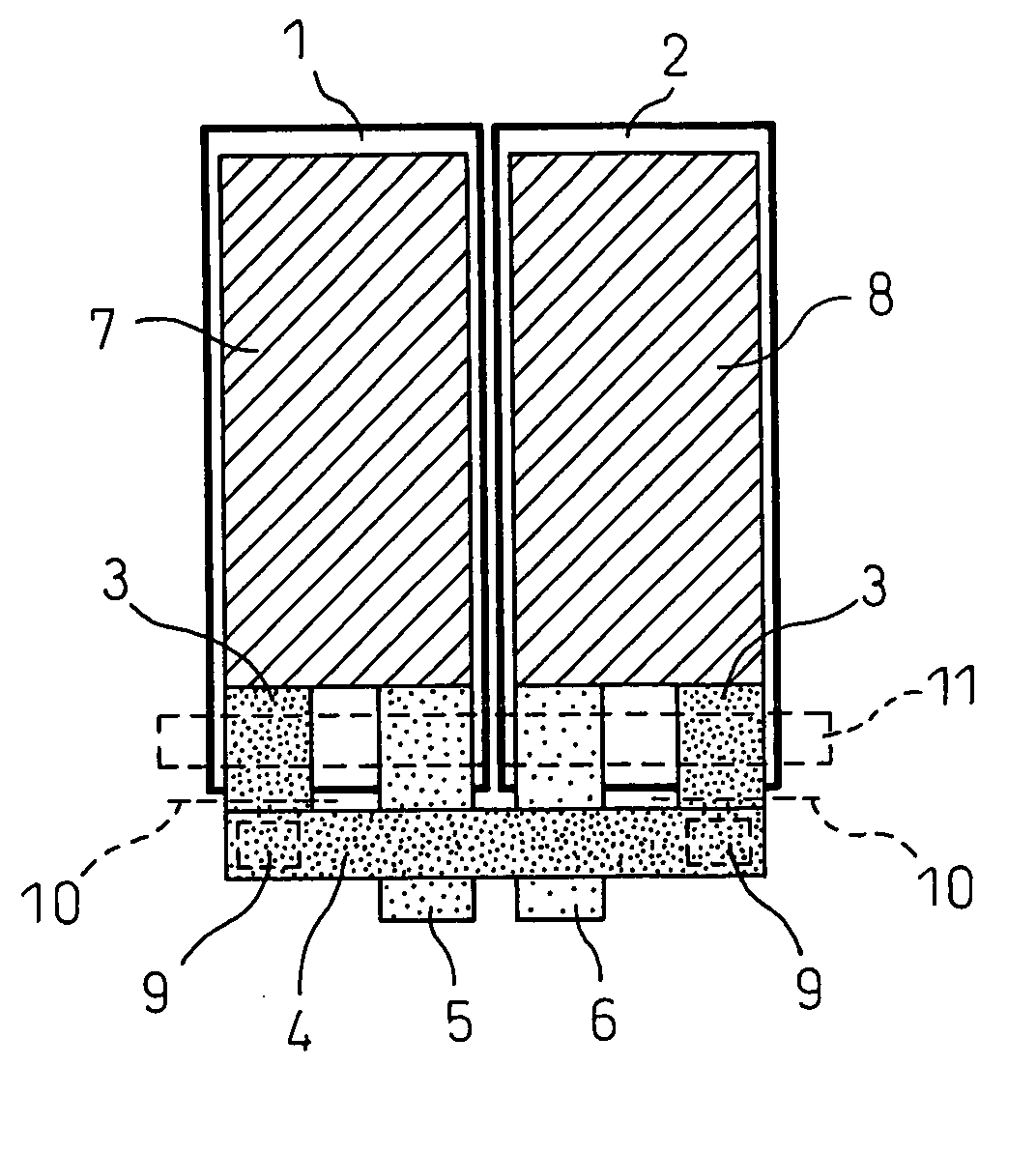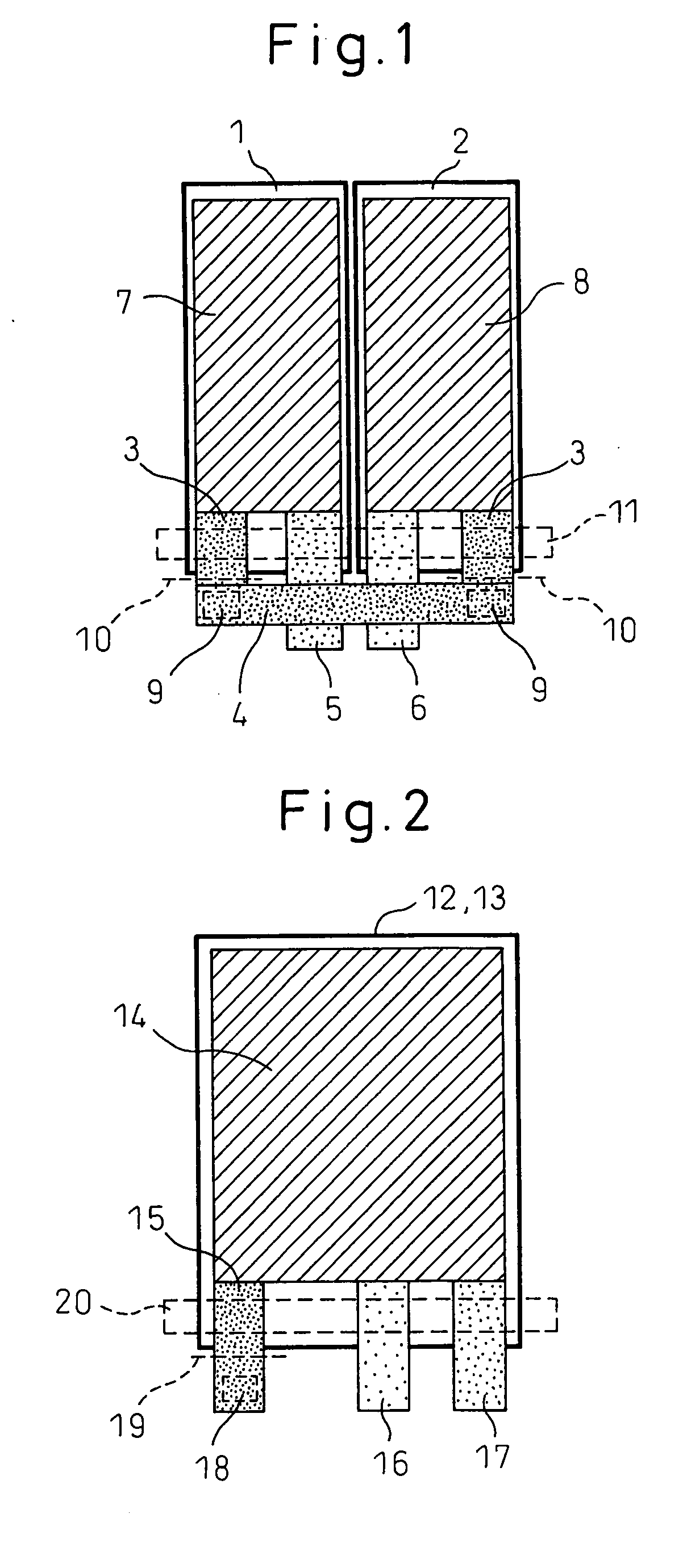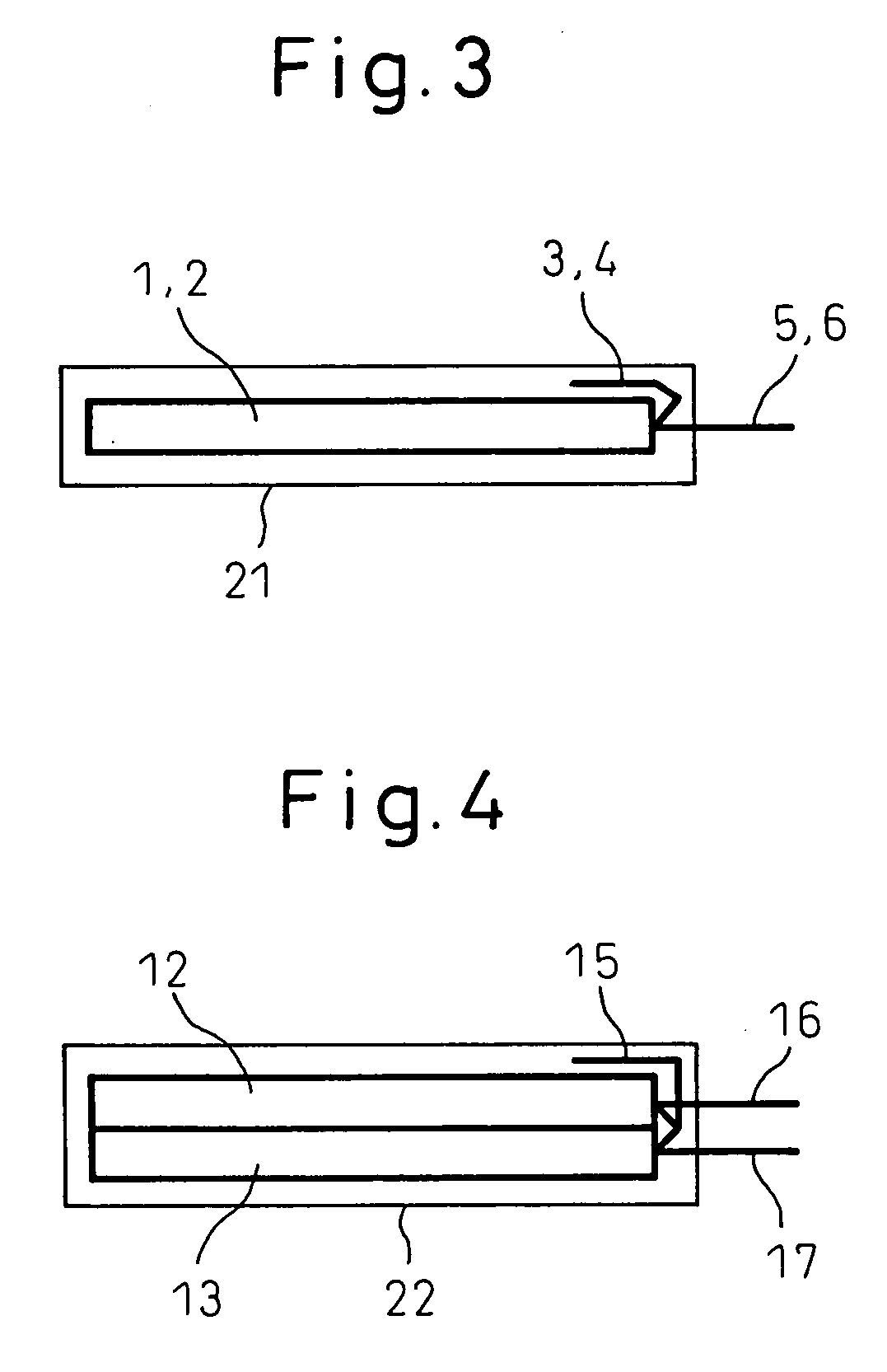Electric Double Layer Capacitor
a double-layer capacitor and capacitor technology, applied in the field of electric double-layer capacitors, can solve the problems of not meeting the requirements for a size reduction, using the same capacitor, and the device cannot handle such an instantaneous large current discharge very well
- Summary
- Abstract
- Description
- Claims
- Application Information
AI Technical Summary
Benefits of technology
Problems solved by technology
Method used
Image
Examples
embodiment 1
[0043] An electric double layer capacitor according to a first embodiment achieves a higher power output, especially a higher power output under low-temperature environments, than the conventional electric double layer capacitor. Accordingly, the electric double layer capacitor of this embodiment is useful in applications that impose stringent requirements on the operating characteristics under low-temperature environments, and more specifically, in hybrid electric vehicle (HEV) and like applications.
[0044] In the first embodiment, the electric double layer capacitor comprises a pair of electrodes formed from activated carbon, a separator, and a nonaqueous electrolytic solution, and is characterized in that the average particle size of the activated carbon is not smaller than 0.1 μm but smaller than 1.0 μm. In the following description, the activated carbon used in the electric double layer capacitor of the present invention is called the submicron activated carbon. The average par...
example 8
Method Example 8
[0110] 93 parts by weight of the experimental activated carbon 1, 7 parts by weight of acetylene black, 17 parts by weight of polyvinylidene fluoride (manufactured by Kureha Chemical), 337 parts by weight of DMAc, and 4 parts by weight of polyvinyl pyrrolidone were mixed to produce a slurry. The slurry was applied over the experimental current collector 3 and dried. The structure was then pressed at a temperature of 150° C. to produce an activated carbon electrode.
Reference Method Example 1
[0111] 93 parts by weight of the experimental activated carbon 1, 7 parts by weight of Ketjen black, 17 parts by weight of polyvinylidene fluoride (manufactured by Kureha Chemical), 565 parts by weight of DMAc, and 4 parts by weight of polyvinyl pyrrolidone were mixed to produce a slurry. The slurry was applied over a current collector formed from a 20-μm thick, etched aluminum foil (part number 20 CB manufactured by Japan Capacitor Industrial Company), and was dried, but cracks ...
example 4
Reference Method Example 4
[0114] 93 parts by weight of the experimental activated carbon 1, 7 parts by weight of Ketjen black, 17 parts by weight of polyvinylidene fluoride (manufactured by Kureha Chemical), and 2000 parts by weight of DMAc were mixed to produce a slurry, but the resultant slurry lacked fluidity and was unsuitable for coating. The slurry was applied over the experimental current collector 1, resulting in the production of an electrode having insufficient surface smoothness because of the formation of conspicuous surface irregularities.
PUM
 Login to View More
Login to View More Abstract
Description
Claims
Application Information
 Login to View More
Login to View More - R&D
- Intellectual Property
- Life Sciences
- Materials
- Tech Scout
- Unparalleled Data Quality
- Higher Quality Content
- 60% Fewer Hallucinations
Browse by: Latest US Patents, China's latest patents, Technical Efficacy Thesaurus, Application Domain, Technology Topic, Popular Technical Reports.
© 2025 PatSnap. All rights reserved.Legal|Privacy policy|Modern Slavery Act Transparency Statement|Sitemap|About US| Contact US: help@patsnap.com



